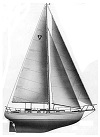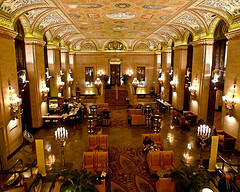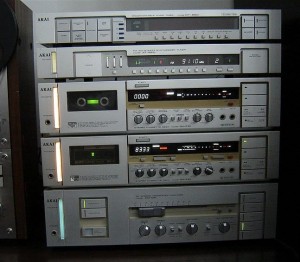
The First Annual CE Pro Masters Awards
By Chuck Schneider
Recognition. It just might be the ultimate high. From that very first Kindergarten star-laden crayon scribble on Mom’s refrigerator to a Nobel, Pulitzer, Oscar or Emmy–getting recognized by others for what you do or did feels pretty darned swell.
I’ve been fortunate to have received a number of individual awards over my career in CE and remember every situation in vivid detail. Later on, as a rep principal, I gushed like a soccer mom when one of my staff was recognized by a vendor.
More often than occasionally, lots of deserving folks get overlooked when the award “wood” is handed out. That was the thinking when CE Pro conceived of these awards as a cherry on top of their year-long 20th Anniversary sundae. It was first named “50 over 50” but that was deemed not so original. After much debate it was decided that CE Pro Masters had the right ring.
The criteria were pretty straight forward. CE Pro was looking for career CE folks who’ve moved up the ladder of success over the past several decades and made an honest living. Some of these people intentionally stayed out of the spotlight while others have concentrated on their jobs rather than endless self promotion.
Here they are—the first CE Pro Masters.
Leonard Bellezza, Principal, Lyric Hi-Fi & Video: Leonard and his partner, Dan Mondoro, took over this Manhattan Mecca of high end audio-video from founder Mike Kay in 2004 when it celebrated its 45th anniversary. By then they had been with Lyric for 27 and 20 years respectively. Every custom installer who promotes state-of-the-art components to clients owes a lot to Leonard and other audiophile store owners across the country. If a given piece passes muster at Lyric, it’s good enough for you. The odds are it will offer a fair margin. And it will never be a commodity item.
Charlie Boornazian, Sales Manager, Epson America: In that quandary about whether one should be good at a job or well-liked, Charlie has consistently managed to do both. Coming from specialty retail to a rep firm to the factory level, he’s left his mark everywhere he’s been. After Carver and JBL, Charlie hit his stride at Marantz where he rose to VP while building the brand to a position of prominence. Since departing D&M, Charlie has concentrated on the video business and currently is increasing shelf and ceiling space for Epson.
Paul DiComo, Principal, CE Marketing Pros: In these times, spending over 3 decades with one company should be noticed and noted. Paul left Boston area retail to work as NAD’s first sales manager. From there it was off to Polk Audio where he climbed the ladder to Marketing Manager and oversaw the company through any number of changes. Shortly after Directed Electronics bought both Polk and Definitive Technology, Paul became Senior VP of DefTech. Now, with long time Directed associate Al Ballard, he is a partner at CE Marketing Pros where they weave their market share magic for a myriad of the industry’s leading companies.
Dennis Erskine, Owner, The Erskine Group: No people list of any sort is complete without a true Renaissance Man and that’s just one of the reasons Dennis is a CE Pro Master. Despite being a lifelong classical pianist and a possessing a love of music, Dennis’s CE career is really his second act following his success with numerous Fortune 1000 companies as well as NASA and the Saudi Arabian government. For nearly 20 years now he has worked at a number of custom projects and firms, unpretentiously earning a position of respect that earned him election to the CEDIA Board of Directors. Dennis is also an accomplished pilot.
Mark Friedman, President, The New York Marketing Team: It takes a very special individual to run a big CE rep firm in New York City. But this award goes to Mark in good part because of the career stops he made prior to founding his New York Marketing Team. He brought Bob Carver, kicking and screaming, from niche amplifier designer to national demand brand. He was at JBL when real life actual Harmans roamed the halls. While at Onkyo he was the Gepetto of Integra, the upscale custom spin-off brand many predicted doomed to fail. It is now the de facto business model for creating a wildly successful multi-brand strategy.
Jeannette Howe, Executive Director, Specialty Electronics Nationwide: While at Tweeter and PARA, Jeannette and Deborah Smith were our industry’s version of “Thelma and Louise”. Since joining the Nationwide Marketing Group as Executive Director of Specialty Electronics Nationwide in 2006, Jeannette has helped make many an appliance dealer into a custom installer while simultaneously recruiting home theater and custom shops into their first buying group experience. Her efforts and the results have been beneficial to the industry as a whole. And she always looks so in charge at those CES panel discussions.
Larry Pexton, President, Triad Speakers: Outspoken and never shy about sharing his opinions, Larry Pexton and Triad Speakers have been synonymous with the custom electronics industry for 30 years. “Our growth rate and CEDIA’s growth rate are almost identical … right up to the peak year at Expo being 2007 and our peak sales year being 2007,” says Pexton. As the incoming chair of the association, Pexton latest pet project is to help integrators become better business people and maintain profitability, while challenging manufacturers to stop dropping price points to buy market share. “It’s completely irrational group behavior,” he told CE Pro last year.
Richard Schram, President, Parasound: Schrambo earned his early chops making Pacific Stereo a 1970s powerhouse retailer. He parlayed his Asian buying experience into Parasound about 30 years ago. Schram had the first Sony Walkman knock-off. He met a then unknown but talented amp designer, John Curl, and made him a cult figure. Since then Parasound has represented the value niche in CE better than bigger and more boastful competitors. Richard also continues his relentless crusade against shadowy unauthorized underworld internet characters.
Howard Sinkoff, CEO, Vutec Corporation: Not many people can say they have been around the industry since 1977, but Howard Sinkoff of Vutec can. The screen manufacturer specializes in having a broad range of solutions across all price points for both commercial and residential applications, not to mention having a full line of media concealment devices under the Artscreen brand. Sinkoff himself is a fixture at industry events but never takes himself too seriously.
Deborah Smith, Owner, The Deborah Smith Group: Deborah has cracked enough glass ceilings in CE that all the helmets should be in a trophy case. She started on the sales floor at Tweeter while in college. From there she moved to Manhattan as General Manager for Harvey’s. Back at Tweeter, Deborah was Vice President of Marketing. Her crowning achievement was as Executive Director of the Professional Audio Retailers Association (PARA). When she joined the group was rudderless. When she left, it was significant enough to be taken under the wing of the CEA. Today Deborah owns a successful marketing firm with a CE emphasis.
Frank Sterns, Vice President/Custom Installations, Sony: Talent, charm and resilience might just be the Triple Crown for success in business and Frank has them all. Working for two audiophile companies led Frank to Infinity and 5 years as national sales manager. Seeing the future in custom, he then went to Niles and, as VP of Sales, served as the right hand man of Ivan and Lori Zuckerman. Frank survived the roller coaster than became Nortek/Core Brands but left them to refresh, make some wine and prepare for act two. After a brief flirtation with an undercapitalized startup, he recently joined Sony as VP of Custom.
Richard Stoerger, Vice President/COO, Audio Design Associates: I don’t think even Abraham Lincoln would have wanted to debate Richard Stoerger. As one of CEDIA Founding Members, Stoerger has been instrumental in the development of the custom electronics industry. Since 1988, this half tech geek/half sales machine has brimmed with not enthusiasm, but also skilled analysis on topics ranging from the decline of conspicuous consumption when the recession hit to finding the right emphasis on purchasing American-made products vs. offshore. Whatever the debate, Stoerger is likely to be in the middle of it, guiding integrators along the way.
Charles Thompson, President, Sell Through Solutions: Most who have worked with him or just attended one of his thousands of training sessions all over the world call Charles Thompson the best sales trainer ever put on the planet. He has trained for some of the best, most notably Head Monster Noel Lee who taught Charles more than a few tricks. As President and Owner of Sell Through Solutions for over a decade, Charles now offers his training insight for a number of the leading vendors in the CE business. Cooler than the other side of the pillow.
Wally Whinna, Principal, Allnet Distributing: Wally Whinna opened up Allnet distributing in Chicago back in 1995, and was one of the visionaries and founding members of AVAD, the coalition of regional distributors that would be acquired by Ingram Micro 10 years later for as much as $200 million. After his non-compete was up in 2010, Whinna re-started Allnet (sister company of his 31-year-old rep firm Tandem Marketing), providing the same great customer service as the early days. This year, dealers named Allnet as the platinum winner for best customer service and communications in the CE Pro Quest for Quality Awards. In an interview with CE Pro for that award, Wally said, “We have seven field salespeople who work with the dealers in the field to close sales, specify jobs, do jobsite walk through, presentations to their professional referral base, meet with their clients or whatever it takes to help them close a sale.
Keith Zoll, Principal, Ray Supply: Keith started at Ray’s Supply straight out of college as the warehouse guy. Moving from the back of the house to the front he was general manager, then VP, and finally bought the place (with a partner) 30 years after he started. He helped transform this single store entity, situated about halfway between Albany and Lake George NY, from a classic TV parts distributor to a camera and stereo specialty shop to a CE Pro 100 custom installer. No small feat, given the rural nature of this town in the EIA’s smallest BPI territory.
So there you have them. A group of people, most of whom likely don’t know each other very well if at all, forever linked. People honored for the words written on their awards: “For Recognition Of a Lifelong Career In Consumer and Custom Electronics Punctuated by Honesty, Hard Work and the Admiration of Your Peers”.
As Glenn Frey wrote, “You can check out any time you want, but you can never leave.”
(This piece originally appeared in the December 2013 edition of CE Pro magazine. It has been edited for AIHS and is reprinted with the permission of EH Publishing, Inc.)
THE RACK SYSTEM—Darth Vader Comes to Audio
A few of you are just about old enough to remember a particularly ugly era in the history of Consumer Electronics, a time that many contend (including me) started audio components on their death spiral that continues even today. It started sometime around 1975 and was pretty much over by the late 1980s. This was the era of the “rack system.”
It was innocent enough at the jump as most evil intended entities are. Separate audio components were hot items in the mid 1970s. Specialty stores were everywhere. Here in the Boston area alone, Harvard Square boasted eight stereo stores at the peak.
Manufacturers, most notably Japanese manufacturers, were in a race for greater and greater market share. By that time they dominated the receiver business, having vanquished or acquired the great American audio brands of the 1950’s and 1960s. They had made great strides in the turntable arena stealing business from European brands by successfully convincing the vinyl buying public, mostly stoners, that playing records one at a time was better for the planet that stacking them on a record changer, that malevolent contraption straight out of your Mom’s fruitwood veneer Sylvania console from 1957.
Yet the boys from the Pacific Rim had close to zero market share in freestanding speakers. True, they had improved the boxes cosmetically moving away from the fretwork grilles of the military PXs in the Viet Nam era to something that at least looked like a KLH. But putting lipstick on those pigs did nothing to help sales and speakers were the most profitable components in the system. (OK. OK. I’m not forgetting phono cartridges.) They needed something to increase the top and bottom lines and sell more speakers. Enter the rack.
The rack system looked like component stereo pieces placed on shelves in a piece of furniture. Safe enough, right? But the “components” were one big piece of electronics that shared a power supply thereby defeating the whole raison d’être for buying components over consoles and compact systems in the first place. It was deceptive. It was hypocritical. And it sounded just dreadful. But it succeeded. It was so successful in fact that major specialty audio stores were forced to carry it for of fear losing business.
The manufacturers sold these things to everyone short of convenience stores. Most notably, they put places like Macy’s and JC Penney in the specialty stereo business for the first time. Craving more, they moved even further down market to the likes of Target and K-Mart. Finally, the systems found their way onto little brochures tucked into virtually every credit card billed ever mailed.
Then suddenly they were gone. But like a hurricane, tornado or tidal wave their relatively brief time on the audio scene caused destruction that would last a long long time. Component audio came back with the rise of home theater but the thrill of a carefully chosen music system was dealt a near fatal blow.
(This piece originally appeared on the CE Pro website December 17, 2013 with the title “Can You Trust Your Vendors?” It has been edited for AIHS and is reprinted with the permission of EH Publishing, Inc.)
Major Buying Groups—The Glory Days Of The Mid 1970s
 Chicago, January 1976. Not just Chicago but the Conrad Hilton Hotel, then the Crown Jewel of the Magnificent Mile in Chicago, January 1976. Back when CES was a twice a year event and both shows were in the Windy City. Before Las Vegas!
Chicago, January 1976. Not just Chicago but the Conrad Hilton Hotel, then the Crown Jewel of the Magnificent Mile in Chicago, January 1976. Back when CES was a twice a year event and both shows were in the Windy City. Before Las Vegas!
It was 5:30PM when I walked unnoticed into the Grand Ballroom. Very important men were gathered in small groups holding adult beverages and talking amongst themselves. I recognized a few of them from trade magazine photos. There was Jack Luskin from Baltimore talking to Alan Wurtzel from the Ward’s Company (before Ward’s decided that Circuit City was a way cooler name). In another group stood Dick (of Newmark and) Lewis laughing it up with Dave and Gene Mondry from Highland in Detroit and Saul Gold the Executive Director of the NATM Buying Corp.
Every one of the men mentioned in that last paragraph is in the Consumer Electronic Association Hall of Fame. They were the leaders of the Forty Thieves, the affectionate but somewhat damning nickname for the National Association of Television Merchants. The 16 (which may have seemed like 40) members of NATM were the most powerful hard goods retail force in America well into the 1980’s.
If you were a vendor or competitor of a NATM member during this era you know how significant this group was.
I had recently been hired as the youngest buyer in Boston-based Lechmere’s history. I bought Hi-Fi/Stereo, considered an emerging category. Lechmere was no shrinking violet in NATM. The founding Cohen family (also each a CEA Hall of Famer) had recently sold their 4 store chain to Dayton-Hudson Corporation which had also just purchased Target Stores. Either Lechmere or Target was going to be D-H’s choice to nationally go head-to-head with K-Mart and/or Sam Walton’s upstart discounter Wal-Mart. (Guess who won that contest?) (more…)


Recent Comments